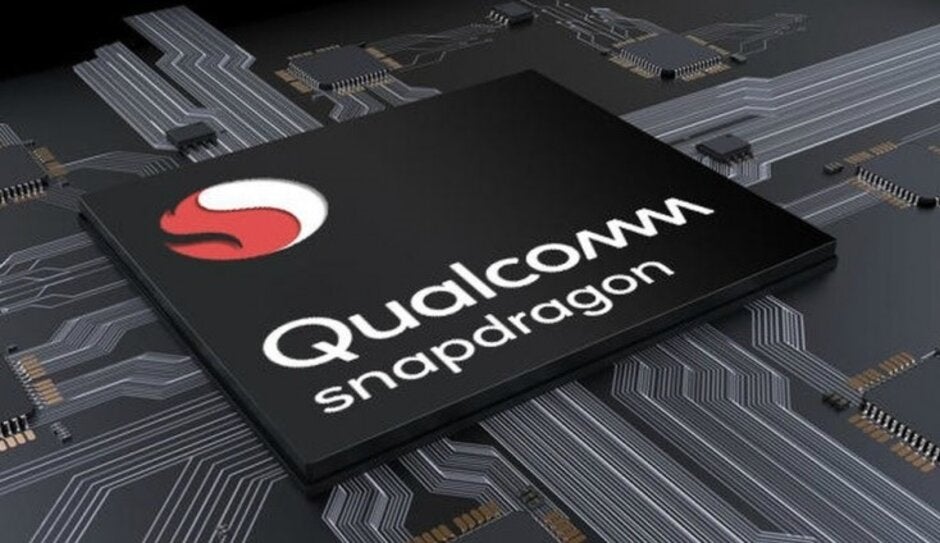The Snapdragon 735 chipset could lead to lower prices for 5G phones

Everyone is awaiting Qualcomm's introduction of its next-generation flagship SoC, the Snapdragon 865 Mobile Platform. This could take place sometime next month. Meanwhile, you might recall that six months ago the chipmaker unveiled the Snapdragon 730 chipset and the Snapdragon 730G gaming-focused chip. And now, Droidholic has reported on some information about an upcoming Snapdragon 7xx series chip, the Snapdragon 735 (SM7250).
The Snapdragon 735, while designed by Qualcomm, will apparently be manufactured by Samsung using its 7nm EUV LPP (Low Power Plus) process. The lower the process number, the higher the number of transistors that can fit inside an integrated circuit. By adding transistors, chips become more powerful and energy-efficient. By next year, both Samsung and rival TSMC should be rolling 5nm chips off of its assembly line (more on this later). The EUV stands for extreme-ultraviolet lithography, a technology that allows chip dies to be more precisely marked up for transistor placement; this will also allow more transistors to fit inside a chip. When you consider that Huawei's Kirin 990 SoC with an embedded 5G modem contains about 10.3 billion transistors, you can understand how precise chip production must be.
The Snapdragon 735 chipset will reportedly be 5G ready
The Snapdragon 735 SoC is rumored to feature eight cores with a pair of Cortex-A76 cores to do the heavy lifting; the remaining six Cortex-A55 cores will be earmarked for general housekeeping. The latter will reportedly run at a clock speed of 1.73GHz, and the two high-performance cores at 2.26GHz and 2.32GHz. If the rumored specs are legit, the chipset will come with the Adreno 620 GPU and support up to 12GB of RAM and 4K video at 60fps. And there is good news for consumers; the Snapdragon 735 SoC is said to be 5G ready, which means that support for the next generation of wireless will be available on more mid-range (and less expensive) phones.
It should be noted that Qualcomm has yet to introduce the component. The Snapdragon 735 SoC will replace the 730 which is produced using the 8nm process and ships with the Adreno 618 graphics processor. Some features of the current chip, such as support for the new Wi-Fi 6 standard and the multi-core Qualcomm AI Engine, will undoubtedly be found in the Snapdragon 735 chipset. Qualcomm said earlier this year that it would bring 5G support to its mid-range series 7xx and series 6xx Snapdragon chipsets.

The Qualcomm 735 chipset will supposedly use ARM's Cortex-A76 and Cortex-A55 CPU cores
As for the eagerly awaited Snapdragon 865 Mobile Platform, the other day Chinese luxury goods manufacturer 8848 was the first to announce a phone that will be powered by Qualcomm's new flagship chipset. The Titanium M6 5G will ship next year with the Snapdragon 865 SoC inside. While Qualcomm could introduce the chip next month, it won't be found inside any consumer devices until next year.
What we know about the Snapdragon 865 is that Samsung's foundry unit will manufacture it using Samsung's 7nm EUV process. The Snapdragon 855 and the overclocked Snapdragon 855+ chipsets were both produced by the world's largest independent foundry, Taiwan Semiconductor Manufacturing Company (TSMC) using TSMC's 7nm process. 2021's Snapdragon 875 Mobile Platform will be produced by TSMC using its new 5nm process. At 5nm, integrated circuits are packed with as many as 171.3 million transistors per square millimeter.
Both Samsung and TSMC have roadmaps taking production to 3nm. The latter is reportedly working on ways to keep increasing the number of transistors inside a chip to increase both power and energy consumption. Just to show you how far we've come, the Apple iPhone 4, released in 2010, featured Apple's A4 SoC under the hood. That chip was designed by Apple, equipped with ARM's Cortex-A8 CPU, and built by Samsung using its 45nm process.
Follow us on Google News










Things that are NOT allowed:
To help keep our community safe and free from spam, we apply temporary limits to newly created accounts: